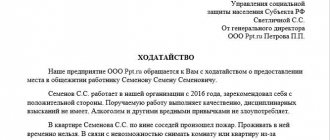How much, in what mode and according to what schedule employees work, each employer decides independently. The main condition is that working hours do not exceed the thresholds established by law. As a rule, the operating mode is set once and for a fairly long period of time, but sometimes, due to various circumstances, there may be a need to change it. The main document on the basis of which changes occur is the order to change the working hours.
- Form and sample
- Free download
- Online viewing
- Expert tested
FILES
How and where the operating mode is reflected
Documents that record employees' working hours:
- collective or individual labor agreement,
- internal labor regulations.
Moreover, if there is a trade union organization at the enterprise, its opinion must be taken into account when establishing the working regime.
If any changes are made to this parameter of working conditions, the company must draw up a corresponding order, also approved by the trade union. The absence of this document, if anything happens, can lead to administrative punishment from supervisory authorities in the form of a fairly large fine both for the enterprise itself and for its manager.
Changing the work schedule at the initiative of the employer
Application for change of work schedule: sample
Sometimes it becomes necessary to change the work schedule of employees in one department or the entire enterprise. For example, production is switching to round-the-clock operation, and new shifts need to be introduced, or some employees need to be transferred to work in three days. Naturally, some workers may not like such conditions, and it is necessary to correctly draw up documents on transfer to a new schedule or dismissal in order to avoid mutual claims.
According to the Labor Code of the Russian Federation, the employer is obliged to notify employees of changes in the work schedule at least 2 months in advance. You can issue a collective notification and familiarize employees with it against signature, or send out personal notifications to each employee indicating their new schedule. If someone refuses to sign the notification, a report is drawn up about this.
Personal notices are drawn up in two copies, and on what remains with the employer, a receipt mark must be placed with the employee’s signature. This precaution avoids claims that employees were not notified of a transfer to a new schedule in a timely manner.
In any case, the employer does not have the right to force employees to work according to a new schedule. It is necessary to involve representatives of the trade union in its development, if there is one at the enterprise. All changes to labor regulations must be agreed upon with the head of the trade union or other body representing the interests of workers in the organization.
The employer issues an order to transfer to a new schedule. If the employee agrees, he either signs the order confirming his consent, or writes a statement addressed to management. After this, an additional agreement with a new schedule is drawn up in two copies: one remains for the employer, the second for the employee.
Who draws up the order
An order to change the working hours is drawn up on behalf of the director of the enterprise by any employee authorized to write administrative documentation. This could be the head of a structural unit, secretary, legal adviser, etc.
The completed order is submitted to the head of the company for approval.
Without his signature, it will not acquire legal force and can be challenged without much difficulty with the help of a court or labor inspectorate.
Is it possible to do without an application?
It is impossible to do without an application, since the working hours regime (schedule) is one of the main conditions of the employment contract of an enterprise employee, which is concluded at the stage of his employment.
And any subsequent change to the clauses of the contract should always occur only by mutual agreement of the parties. After an agreement is reached between the parties, an additional agreement to the employment contract is formed between them regarding this or that change.
What to rely on when creating an order
All orders issued by companies must have some basis in the form of a written document or legal norm. In this case, article 74 of the Labor Code of the Russian Federation can be indicated as such, the provisions of which serve as a direct basis for writing orders of this kind, but only on the condition that the changes are caused by changes in technical characteristics or organization of working conditions.
By referring to this article of the law, the employer can change the working hours without being interested in the opinions of subordinates.
But Article 72 of the Labor Code of the Russian Federation, which can also serve as the basis for issuing an order to change the working hours, can only be referred to if these changes occurred by mutual agreement of the parties .
What is a working time schedule and working hours?
It’s worth starting with the fact that the organization’s work schedule and the employee’s work schedule are different concepts.
A work schedule is the distribution of working time and rest time for employees during a certain calendar period. A document under this name is developed by management for the purpose of planning the activities of employees and keeping records of the time they worked. Its contents are brought to the attention of staff one month before the schedule comes into effect. Ignoring the provisions of the document is fraught with trouble for employees.
Working hours may vary - options are presented in Art. 100 Labor Code of the Russian Federation. It should be noted that each employer has the right to determine specific working hours for its employees.
Most often, employees work five-day shifts: they have to devote to work 5 days a week, 8 hours a day. At the same time, they are given 2 days off for rest. Another common option is a six-day period. It assumes 6 working days a week and 1 day off. At the same time, the normal length of working time, just as with a five-day week, is no more than 40 hours per week (Article 91 of the Labor Code of the Russian Federation). When talking about the work schedule at an enterprise, in most cases it means shift work.
Key points in drafting an order
Now there is no standard, uniform sample order for changing working hours, so employers can write it in any form. In some cases, enterprises use internal document templates approved in the company's accounting policies. But, regardless of which path is chosen, the order must include a number of mandatory information. These include:
- Document Number,
- locality,
- date of document preparation,
- Name of the organization,
- the essence of the order, i.e. new working hours,
- the basis for its writing,
- persons responsible for its execution, indicating their positions and full names (here this is usually a specialist or the head of the personnel department).
It would be good if the reasons why these changes occurred were immediately indicated (optimization of the production process, difficult financial situation of the company or, on the contrary, an increase in the volume of work, etc.). If any additional papers are attached to the document, their presence must be indicated in a separate paragraph.
It must be said that the order may concern both individual employees of the enterprise and the entire team as a whole: information about this also needs to be reflected in the document.

How to change working hours in an organization
The employer has no right to refuse these persons. However, the reasons are not limited to the above list of situations. In some cases, management accommodates the employed person if he has changed his place of residence, and therefore begins to spend much more time on the road to the place of employment.
This is interesting: Elektrostal how to get a pension if you haven’t been home
If the changes are permanent and, moreover, affect many or even all employees of the organization, the PVTR in the new edition is approved. The new rules are communicated to all employees. In this case, there is no need to ask each employee for permission to make changes. However, changes must be made to the PVTR taking into account the opinion of the trade union.
How to place an order correctly
As for the descriptive part of the document, the law does not impose any special requirements for its execution, so the order can be written on an ordinary blank sheet of A4 or A5 format or on company letterhead, printed or handwritten. The only thing that must be observed is the presence of an original signature of the head of the organization or a person authorized to endorse such papers.
In addition, the order is usually signed by the employees responsible for its implementation and those personnel representatives who are directly affected by it.
The signatures of the latter, although they do not have to be present on the document, indicate that their authors are familiar with the order and agree with it.
Today there is no strict need to put a stamp on an order: various types of cliches and stamps can only be used in cases where this norm is established in the internal local acts of the company. In the general procedure, which also applies to legal entities, seals and stamps are no longer required for use.
Usually the order is written in one original copy , additional copies can be made (for example, for presentation to the personnel department and accounting department).
Working hours - how to change
PVTR is a local regulatory act that regulates the procedure for hiring and dismissing employees, the basic rights, duties and responsibilities of the parties to an employment contract, work hours, rest periods, incentives and penalties applied to employees, as well as other issues regulating labor relations with a given employer ( Article 189 of the Labor Code of the Russian Federation ), which is adopted taking into account the opinion of the representative body of workers ( Article 190 of the Labor Code of the Russian Federation ).
We inform you that as of November 26, 2021, Snezhinka LLC has the following vacancies that are offered to you in accordance with Art. 74 of the Labor Code of the Russian Federation in connection with refusal to continue work due to changes in working conditions:
Examples of dividing the working day into parts
Example 1
To the employee of the cafe-snack S.A. Krasnov. The following work schedule is established: the first part is from 7-00 to 10-00 hours, the second part is from 14-00 to 18-00 hours. This is due to the diet of the bulk of the diner's clients - during the period separating the two parts of S.A. Krasnov's working day, their influx is minimal. When Krasnov is free from work, an additional agreement also includes a lunch break of 1 hour. In total, Krasnov's working time is 7 hours.
For workers of certain professions, the division of labor time into parts is regulated by industry documents. Here, the division is due to the complexity and intensity of workers’ work, and the need to restore efficiency during the day. The employer is obliged, when establishing a separation regime, to be guided by them.
What documents should be drawn up if the division of the working day (time) is introduced during the work process ?
Among these workers:
- bus drivers;
- drivers of trams and trolleybuses;
- civil aircraft crews;
- railway transport specialists servicing service and special cars;
- metro employees directly related to passenger service;
- communications center employees;
- working in ground electric transport organizations, etc.
How to keep track of working hours when dividing a working day (shift) into parts ?
Example 2
For drivers of trams and trolleybuses, the division of the working day into parts is regulated by document (order) of the Ministry of Transport No. 127 dated 10/18/05. Paragraph 9 of the current edition speaks of the possibility of dividing his working time into 2 parts at the driver’s request.
When drawing up the schedule, the following must be taken into account (according to the text of the Ministry of Transport Ave. No. 127, paragraph 8, 9, p. II):
- the break between the two parts of the work shift must be no later than 4 hours after its start;
- the break can last no more than 2 hours (no more than 6 at night);
- The lunch break is not taken into account;
- The duration of work daily should not exceed 10 hours (may increase in exceptional cases by agreement with the trade union to 12 hours).
Is it possible for a driver to divide his working day into parts ?
Thus, if (conditionally) the trolleybus driver Krasnov S.A. started working at 6 am, the following schedule is possible for him:
- From 6 to 10 o'clock - working hours. 4 hours worked.
- From 10 a.m. to 1 p.m.—non-working hours, including 1 hour break for rest and food.
- From 13 to 18 hours are working hours. 5 hours worked.
A total of 9 hours worked per shift, i.e. less than 10 hours. The break dividing working time into parts lasts 2 hours. Lunch break - 1 hour. The restrictions established by the order of the Ministry of Transport have been observed.









